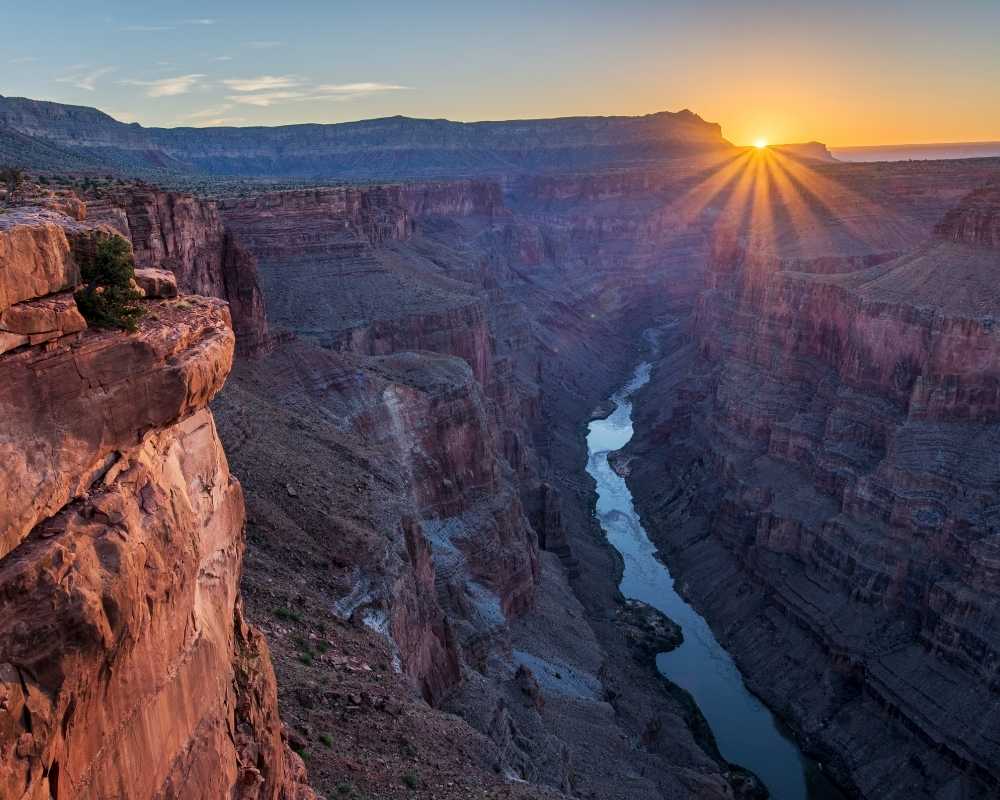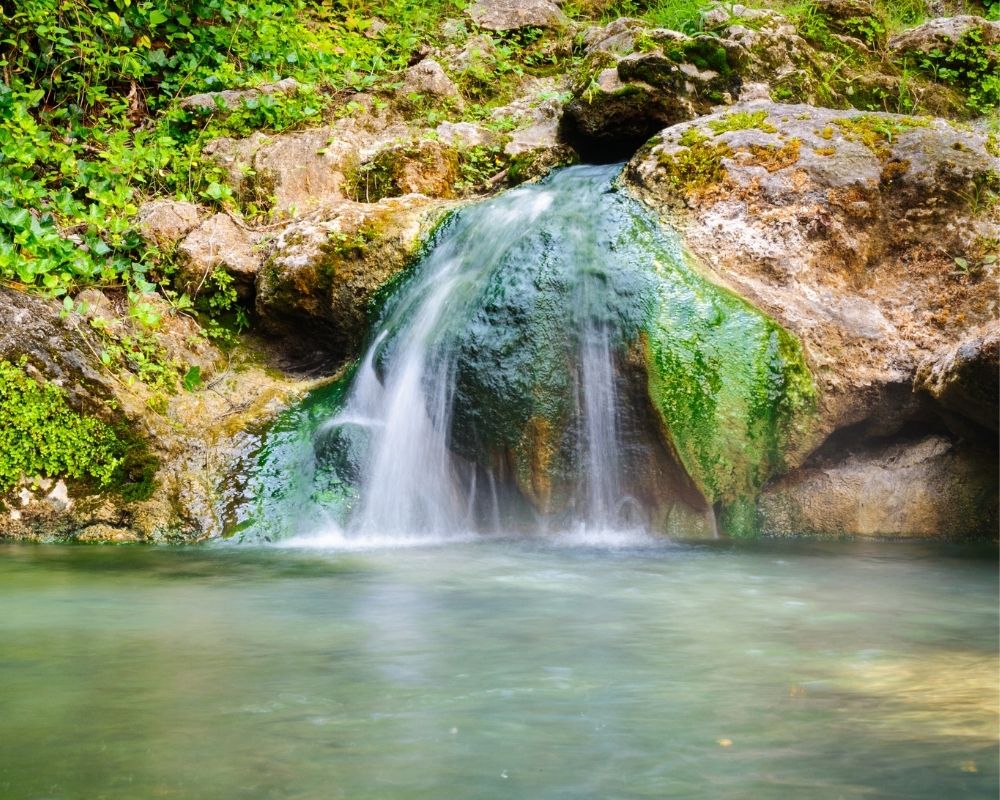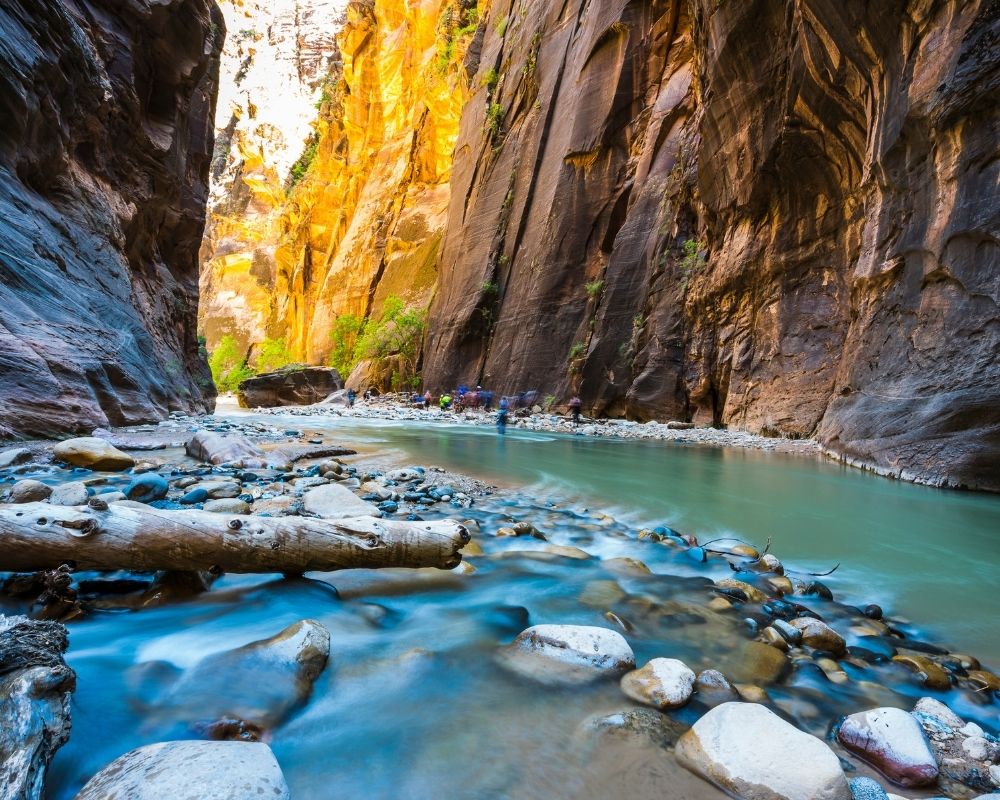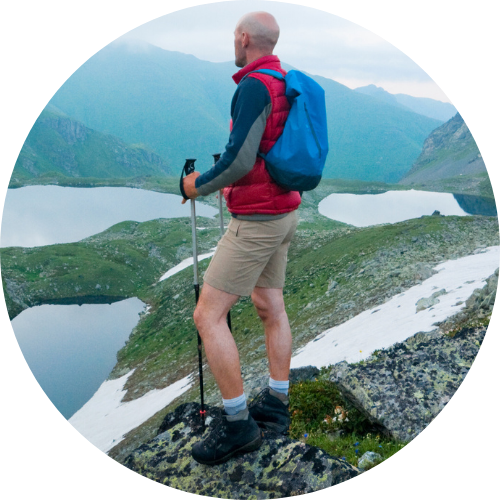A canyon is nothing more than a crack produced from two elements: a river and enough time for erosion to act. A natural wonder worthy of being on your list of destinations, the Grand Canyon is among the top wonders of nature in the world. For this reason, it is one of the most popular and visited parks in America. I have been there more than once, and every time, I am amazed by the views. The Grand Canyon is composed of a wide variety of rock types that respond differently to the forces of erosion. These rock layers vary in thickness, composition, and uplift, resulting in six geologically distinct sections.
About Grand Canyon National Park and Why It’s My #2 Choice
Grand Canyon National Park is a must-see destination for travelers. As declared a World Heritage Site by UNESCO, it is undoubtedly one of the most famous landmarks in the US. It encompasses nearly five thousand square kilometers of deep canyons, multi-colored rocks, towering cliffs, and stunning gorges. In fact, Theodore Roosevelt called it “the one great place all Americans should visit.” While the Grand Canyon’s main activity involves standing on the edge of the cliff and enjoying the magnificent scenery, there are many other ways to enjoy the park’s natural splendor as well. One option is to take a mule ride on the South Rim Trail or to go rafting on the Colorado River.
History of Grand Canyon National Park
At about 275 miles (444 km) long, averaging 10 miles (16 km) wide and over a mile (1.6 km) deep, the colorful, eroded layers of this wonder in northwestern Arizona reveal nothing less than an incredible history. As attractive as the canyon is, the Colorado River zig zags through Grand Canyon National Park and attracts visitors who want to take short guided boat tours or go on a multi-day adventure. There is more to the Grand Canyon than the site’s geological history, the majestic birds of prey, the animals that inhabit this extreme environment, and the first inhabitants of the area. Many tribes still call the Grand Canyon their home, a tradition that began with the ancient Pueblo people.
Where Is the Grand Canyon National Park?
The Grand Canyon is a section of the Colorado River located between the Glen Canyon Dam and the famous Hoover Dam. Still, the part considered a national park is located in north Arizona about 80 miles (128 km) from Flagstaff in the southeast and the Utah border to the north, 230 miles (370 km) from Phoenix to the south, and 275 miles (442 km) from Las Vegas to the west. You can access the 277 mile-long (445 km) canyon through the entrances at the north, south, east, and west ends, but the entrance to the south end receives around 90 percent of the visitors. Most of the services, accommodations within the park, and activities are also located there, making it easier to access all that the park has to offer.
Best Time to Visit Grand Canyon National Park
Grand Canyon National Park can be visited from September to May. To avoid the crowds altogether, visit the park during the off-season, between November and February (except during holidays), when you may be able to enjoy an extraordinary experience with the park entirely covered in snow. Right after a fresh snowfall, the canyon looks like a gigantic orange layered cake with vanilla frosting.
Best Day Hike in Grand Canyon National Park – Bright Angel Trail
The Bright Angel Trail is the most visited route in the Grand Canyon National Park. It departs from Grand Canyon Village and 9 miles (16 km) later – and .80 miles (1,300 m) below – reaches the Colorado River. The so-called “Bright Angel” is a 11.8 miles (19 km) long ring road that has the advantage of offering large shady areas, and drinking water can be found in several places. Moreover, the park officials strongly discourage trying to go down to the river and back up again in a single day. Keep in mind that the canyon’s depth is nearly 1 mile (1,600 m), and the slopes are very steep.
QUICK FACTS
- Location: Grand Canyon Village, Grand Canyon National Park in Arizona
- Distance: 15.6 miles (25 km) Time: 2 to 3 days Difficulty: Strenuous and long, but drinking water is available
- Route: Round trip
- Track Quality: Excellent, well-formatted paths
- Hazards: Heat-related incidents and sprained ankles
- Elevation: 4,285 feet (1,306 m)
- Wet Feet: Yes
- Toilets: Vault and composting
- Mobile Coverage: No
- Updates on trail conditions and closure
HIKE DETAILS
Getting to the Trailhead: The Bright Angel Trail starts from Kolb’s Studio west of the Bright Angel Lodge or from the west side of Grand Canyon Village.
Full Track Description
As one of the most popular hiking trails in Grand Canyon National Park, Bright Angel trail is graded, well maintained, and fairly easy to walk down. Walking in the Grand Canyon can be epic, but always keep in mind that what goes down must come back up. Many hikers seem to forget that when they descend into the canyon via the glittering Los Angeles trail. Park rangers are routinely called to assist hikers on this round-trip route simply because it is a challenging hike back up to the parking lot.
Many people run into some trouble along the way, but there is a special team of rangers who are designated just for this trail. It turns out that heat and exertion can be a hazardous duo. I knew this from the onset, so I was not surprised by the fact that it is recommended to not go down to the river and then back up again in a single day.
The Bright Angel Trail starts close to popular hotels, and access to the rim is very convenient and offers dramatic views of the canyon’s interior. Despite being steep and challenging, this trail is very well maintained and is a great way to start hiking into the canyon. Daywalkers can use the rest houses located at 1.5 miles (2.4 km, two to four hours round trip) and three miles (4.8 km, four to six hours round trip). Both offer drinking water in the summer months.
Halfway up the trail is the Indian Garden Campground, and from there, you can take a small 1.5 mile (2.4 km) trail that will take you to Plateau Point, one of the best viewpoints in the canyon.
After Indian Garden, the Bright Angel Trail continues its steep descent into the Colorado River, descending 200 feet (61 m) through Devils Corkscrew, an impressive switchback path traversing Vishnu Schist rocks along the way. The trail endpoint is at the Bright Angel Suspension Bridge through which you can cross the Colorado River to Bright Angel Campground and the Phantom Ranch Lodge.
Things to Note:
Let’s get started with when not to hike to the Grand Canyon! June, July, and August are scorching hot months and should be avoided. The north side and all its facilities are closed from mid-November to mid-May. The most enjoyable time of year to hike the Grand Canyon is from mid-May to early June and late September to mid-November. An advantage of trekking in the spring is that the bottom of the canyon is covered with beautiful wildflowers.




